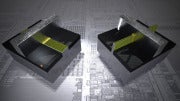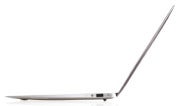Asus
Toshiba
Sony
HP
Samsung
MSI
Compaq
6:22 AM
Product Description Samsung Series 3 305V5A-A01 – A4 3310MX 2.1 GHz – 15.6" TFT
Dimensions (WxDxH) 14.4 in x 9.4 in x 1.2 in
Weight 5.5 lbs
Localization United States
System Type Notebook
Built-in Devices Stereo speakers, wireless LAN antenna, Bluetooth antenna
Processor AMD A4 3310MX / 2.1 GHz ( Dual-Core )
RAM 4 GB DDR3 SDRAM
Card Reader 4 in 1
Hard Drive 320 GB – 5400 rpm
Optical Storage DVD±RW (±R DL) / DVD-RAM
Display 15.6" LED backlight TFT 1366 x 768 ( WXGA ) – 16:9
Audio Output Sound card
Networking Network adapter – Ethernet, Fast Ethernet, Gigabit Ethernet, IEEE 802.11b, IEEE 802.11g, IEEE 802.11n, Bluetooth 3.0 HS
Input Device Keyboard, touchpad
Battery 6-cell lithium ion
Operating System Microsoft Windows 7 Home Premium 64-bit Edition
Manufacturer Warranty 1 year warranty
Samsung Series 3 305V5A price in India Rupees
Samsung Series 3 305V5A-A01 15.6-inch Notebook price, specs, features and review
Thursday, September 15, 2011
Labels:
Samsung
6:17 AM
What Is the Ultrabook?
Since May there has been a nearly constant, subcellular buzz on the
Internet about something called an Intel Ultrabook. But what, exactly,
are we looking at here?
First, let’s understand how Intel “releases” notebooks. Intel makes chips. That, in general, is all they do and all they ever want to do. However, the company often releases reference designs or plans for future products. These reference designs have included embedded systems for machinery (using Intel chips), point-of-sale systems for stores (using Intel chips) and low-power “in-vehicle infotainment systems” (using Intel chips.)
In short, Intel builds something, gives manufacturers the plans (and guidelines), and then sells them a few million chips that will go inside the hardware. That’s why most laptops are, inside, essentially the same: they’re based on a reference design passed along from chipmaker to manufacturer like holy writ.
Every once in a while, though, Intel releases something a bit more impressive than a point-of-sale system. Thus we have the Ultrabook. The Ultrabook is an ultra-slim laptop (think MacBook Air) that maxes out at 0.8 inches thick. Ultrabooks will cost less than $1,000 and they will, obviously, use Intel chips. Other than following those guidelines, however, manufacturers can riff on Ultrabooks like Satchmo on “Cornet Chop Suey.” However, most will depend on one of Intel’s five current reference designs on which to base their manufacturing plans.
The first notebook in the Ultrabook line is the Asus UX21, a .67-inch laptop that is thinner than the Air, includes an 11.6-inch display, one USB 2.0 port and one brand new USB 3.0 port. New processors will join the line-up next year as other manufacturers begin the Ultrabook push.
These laptops are expected to have instant-on features that allows you snap the laptop open and use it immediately. Most will also eschew a mechanical hard drive for one powered by SSDs.
So far the promise of cheap, thin, and light is like a three-legged stool missing a leg: the UX21 and the 13-inch UX31 will cost more than $1,000 when introduced in September and manufacturers are currently struggling to price their hardware below Intel’s requested rate.
This doesn’t mean that Ultrabooks won’t fall below $1,000 in the next year or so. Intel is already cracking down on manufacturers to keep their prices down and, recalling the meteoric drop in netbook prices a few years back, it’s clear that the consumer is hungry for — and expecting — cheaper and cheaper laptops every year.
Source
First, let’s understand how Intel “releases” notebooks. Intel makes chips. That, in general, is all they do and all they ever want to do. However, the company often releases reference designs or plans for future products. These reference designs have included embedded systems for machinery (using Intel chips), point-of-sale systems for stores (using Intel chips) and low-power “in-vehicle infotainment systems” (using Intel chips.)
In short, Intel builds something, gives manufacturers the plans (and guidelines), and then sells them a few million chips that will go inside the hardware. That’s why most laptops are, inside, essentially the same: they’re based on a reference design passed along from chipmaker to manufacturer like holy writ.
Every once in a while, though, Intel releases something a bit more impressive than a point-of-sale system. Thus we have the Ultrabook. The Ultrabook is an ultra-slim laptop (think MacBook Air) that maxes out at 0.8 inches thick. Ultrabooks will cost less than $1,000 and they will, obviously, use Intel chips. Other than following those guidelines, however, manufacturers can riff on Ultrabooks like Satchmo on “Cornet Chop Suey.” However, most will depend on one of Intel’s five current reference designs on which to base their manufacturing plans.
The first notebook in the Ultrabook line is the Asus UX21, a .67-inch laptop that is thinner than the Air, includes an 11.6-inch display, one USB 2.0 port and one brand new USB 3.0 port. New processors will join the line-up next year as other manufacturers begin the Ultrabook push.
These laptops are expected to have instant-on features that allows you snap the laptop open and use it immediately. Most will also eschew a mechanical hard drive for one powered by SSDs.
So far the promise of cheap, thin, and light is like a three-legged stool missing a leg: the UX21 and the 13-inch UX31 will cost more than $1,000 when introduced in September and manufacturers are currently struggling to price their hardware below Intel’s requested rate.
This doesn’t mean that Ultrabooks won’t fall below $1,000 in the next year or so. Intel is already cracking down on manufacturers to keep their prices down and, recalling the meteoric drop in netbook prices a few years back, it’s clear that the consumer is hungry for — and expecting — cheaper and cheaper laptops every year.
Source
6:11 AM
Intel's Ultrabooks: What You Need To Know
Intel on Tuesday announced a new class of ultraportable
laptops called Ultrabooks that promise longer battery life, are less than 0.8-inches thick, and
priced under $1000. Intel announced the laptops at Computex 2011 and
said Ultrabooks will merge the performance capabilities of modern
laptops with "tablet-like features such as instant-on functionality."
Intel is making a big bet on the new-ish laptop category and predicts
that 40 percent of consumer laptops sold worldwide by the end of 2012
will be Ultrabooks.
Laptops in the refreshed category will start rolling out in time for the 2011 holiday season led by Asus' UX21. The first round of Ultrabooks will be followed by two more waves in 2012 and 2013 sporting new Intel processors. Here's a breakdown of Intel's plans for the kinda-sorta-new laptop category, Ultrabooks.
What's under the hood of an Ultrabook?
Intel has announced three waves of Ultrabooks. The first wave becomes available later in 2011 and will include laptops based on the current crop of Sandy Bridge Core i5 and i7 processors.


3D Transistors, Thunderbolt and USB 3.0
The second wave of Ultrabooks will start hitting in the first half of 2012 and will include Intel's new Ivy Bridge processors based on the Sandy Bridge architecture. The new chips are the first to use Intel's new 22-nanometer (nm) manufacturing technology that can implement 3D transistors on Intel chips. The result is a chip that is 37 percent faster than Intel processors made using the 32-nm manufacturing process, according to the company.
The 3D transistors reportedly consume less than half the power of their 2D counterparts currently used in chip manufacturing. Intel also says chips made with the 22-nm process will be cheaper than current chips. Ivy Bridge chips will also include hardware support for Microsoft ' s DirectX 11 graphics. The company also highlighted USB 3.0 and the new Thunderbolt I/O technology at Computex. It's not clear if the second wave of Ultrabooks will include both peripheral ports, but that's probably a good bet.

 Tell Me About The Asus UX21
Tell Me About The Asus UX21
So far, the only Ultrabook being touted is Asus' UX21. The new laptop has a unibody design, is just 0.67-inches at its thickest point (the MacBook Air is 0.68 in.), and can support up to a Core i7 processor. The 2.4-pound laptop also has an 11.6-inch display with 1366-by-768 resolution, glass trackpad, mini-HDMI, one USB 2.0 port, and one USB 3.0, according to a number of reports. Asus' demo model at Computex included 4GB of RAM. Asus did not announce pricing.
Has Intel Tried A Similar Strategy Before?
During Computex 2009, Intel was talking up its CULV ( consumer ultra - low voltage ) processors with similar goals. At the time, IDG News said Intel ' s goal with CULV ' s was to power a "new class of ultra-thin laptops that are as light as a netbook but pack bigger screens and stronger computing power."
Source
Laptops in the refreshed category will start rolling out in time for the 2011 holiday season led by Asus' UX21. The first round of Ultrabooks will be followed by two more waves in 2012 and 2013 sporting new Intel processors. Here's a breakdown of Intel's plans for the kinda-sorta-new laptop category, Ultrabooks.
What's under the hood of an Ultrabook?
Intel has announced three waves of Ultrabooks. The first wave becomes available later in 2011 and will include laptops based on the current crop of Sandy Bridge Core i5 and i7 processors.

3D Transistors, Thunderbolt and USB 3.0
The second wave of Ultrabooks will start hitting in the first half of 2012 and will include Intel's new Ivy Bridge processors based on the Sandy Bridge architecture. The new chips are the first to use Intel's new 22-nanometer (nm) manufacturing technology that can implement 3D transistors on Intel chips. The result is a chip that is 37 percent faster than Intel processors made using the 32-nm manufacturing process, according to the company.
The 3D transistors reportedly consume less than half the power of their 2D counterparts currently used in chip manufacturing. Intel also says chips made with the 22-nm process will be cheaper than current chips. Ivy Bridge chips will also include hardware support for Microsoft ' s DirectX 11 graphics. The company also highlighted USB 3.0 and the new Thunderbolt I/O technology at Computex. It's not clear if the second wave of Ultrabooks will include both peripheral ports, but that's probably a good bet.
Relate: Why Intel's 3D Transistors Matter
The third wave of Ultrabooks will arrive in 2013 rocking third-generation Core processors, code-named Haswell. Intel claims Haswell-powered Ultrabooks will be even thinner with longer battery life and reduced power consumption. Tell Me About The Asus UX21
Tell Me About The Asus UX21So far, the only Ultrabook being touted is Asus' UX21. The new laptop has a unibody design, is just 0.67-inches at its thickest point (the MacBook Air is 0.68 in.), and can support up to a Core i7 processor. The 2.4-pound laptop also has an 11.6-inch display with 1366-by-768 resolution, glass trackpad, mini-HDMI, one USB 2.0 port, and one USB 3.0, according to a number of reports. Asus' demo model at Computex included 4GB of RAM. Asus did not announce pricing.
Has Intel Tried A Similar Strategy Before?
During Computex 2009, Intel was talking up its CULV ( consumer ultra - low voltage ) processors with similar goals. At the time, IDG News said Intel ' s goal with CULV ' s was to power a "new class of ultra-thin laptops that are as light as a netbook but pack bigger screens and stronger computing power."
Source
Subscribe to:
Comments (Atom)





